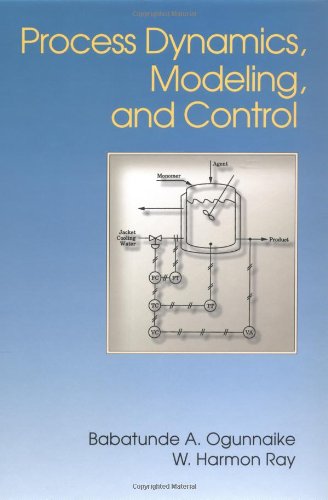Process Dynamics, Modeling, and Control epub
Par cervantez arturo le jeudi, octobre 29 2015, 21:31 - Lien permanent
Process Dynamics, Modeling, and Control by Babatunde A. Ogunnaike, W. Harmon Ray


Process Dynamics, Modeling, and Control Babatunde A. Ogunnaike, W. Harmon Ray ebook
Publisher: Oxford University Press, USA
Format: pdf
Page: 1296
ISBN: 0195091191, 9780195091199
Natural Resource For each of these, read 1-2 refs to understand the relationships between tree-, stand-, and landscape-level processes, and how management approaches to the disease reflect these processes. (www.tenovagroup.com) is a dynamic process control and optimization system based on the real-time measurement of off-gas composition. FOPDT models of the process gain and dynamics may change over the range of a measured variable. Furthermore, the significance of the stability results are illustrated in a simple real life scenario that is under controlled quarantine disease strategy. Limitations of linear algorithms; gain scheduling; programmed adaptive control; process variable linearization; application to pH control. Theoretical mathematical models can help analyze viral dynamics in this early phase, and hence offer insights into therapeutic and prevention strategies, as evidenced by a paper published last month in the SIAM Journal on Applied Mathematics. Process gain, dead time and lag; concept of order; simplifying approximations; obtaining dynamics from plant tests; linearity; non-self-regulating process. Approaches to building and using models; SIR epidemiological models; Population structure in disease dynamics; Plant-specific applications. It is clear that many fascinating problems still remain to be addressed in parasite transmission modelling, from better understanding of transmission processes and natural history of infection to investigating the impact of We foresee a continuing bright future for using mathematical modelling to clarify parasite transmission dynamics and address problems related to effective parasite control. Development of control algorithm; tuning by trial and Internal Model Control (IMC); tuning; impact of modeling error; limitations. Once this relationship is known, then the tuning of the control may be automatically changed to compensate for the nonlinearity. Harmon Ray English | 1994 | ISBN: 0195091191 | 1296 pages | PDF | 25.70 MB Process Dyn. Fitting time-series data with iterative filtering; Model Comparison. The Expert Furnace System Optimization Process (EFSOP®) developed by Tenova Goodfellow Inc. Originally developed for electric arc furnaces, it has been In practice, static charge models have a limited ability to predict end-point because they do not account for process dynamics. Process Dynamics, Modeling, and Control (Topics in Chemical Engineering) by Babatunde A.